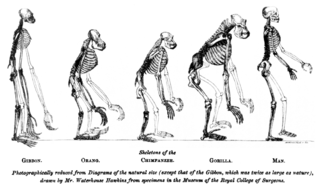| Cyathea crassa | |
|---|---|
| Scientific classification | |
| Kingdom: | Plantae |
| Division: | Pteridophyta |
| Class: | Pteridopsida |
| Order: | Cyatheales |
| Family: | Cyatheaceae |
| Genus: | Cyathea |
| Subgenus: | Cyathea |
| Section: | Alsophila |
| Species: | C. crassa |
| Binomial name | |
| Cyathea crassa Maxon, 1909 | |
| Synonyms | |
| |
Cyathea crassa is a species of tree fern endemic to the Santo Domingo area in the Dominican Republic. Little is known about this rare tree fern.

The order Cyatheales, which includes the tree ferns, is a taxonomic division of the fern class, Polypodiopsida. No clear morphological features characterize all of the Cyatheales, but DNA sequence data indicate the order is monophyletic. Some species in the Cyatheales have tree-like growth forms, but others have rhizomes.

Santo Domingo, officially Santo Domingo de Guzmán, is the capital and largest city in the Dominican Republic and the largest metropolitan area in the Caribbean by population. In 2010, its population was counted as 965,040, rising to 2,908,607 when its surrounding metropolitan area was included. The city is coterminous with the boundaries of the Distrito Nacional, itself bordered on three sides by Santo Domingo Province.

The Dominican Republic is a country located in the island of Hispaniola, in the Greater Antilles archipelago of the Caribbean region. It occupies the eastern five-eighths of the island, which it shares with the nation of Haiti, making Hispaniola one of two Caribbean islands, along with Saint Martin, that are shared by two sovereign states. The Dominican Republic is the second-largest Caribbean nation by area at 48,671 square kilometers (18,792 sq mi), and third by population with approximately 10 million people, of which approximately three million live in the metropolitan area of Santo Domingo, the capital city.
C. crassa is part of the Cyathea woodwardioides complex from the Greater Antilles together with five other species: Cyathea fulgens , Cyathea grevilleana , Cyathea portoricensis , and Cyathea tussacii .

The Greater Antilles is a grouping of the larger islands in the Caribbean Sea: Cuba, Hispaniola, Puerto Rico, Jamaica, and the Cayman Islands.
Cyathea fulgens is a species of tree fern native to Cuba, Jamaica and Hispaniola. It forms part of the complex centered on Cyathea woodwardioides comprising six very similar taxa from the Greater Antilles. The other five species are Cyathea crassa, Cyathea grevilleana, Cyathea portoricensis and Cyathea tussacii. Large and Braggins (2004) note that this group is known to cross with members of the Cyathea minor complex. In the wild, C. fulgens also forms hybrids with Cyathea brooksii.
Cyathea grevilleana is a species of tree fern endemic to Jamaica, where it grows in moist gullies and on wooded hills in both calcareous and noncalcareous soils at an altitude of 200–1200 m. The trunk of this plant is erect, about 7 m tall, and 10–15 cm in diameter. It is characteristically clothed in old stipe bases, brown scales and blackish spines. Fronds are tripinnate, dark green in colour, and up to 4 m in length. The last pinnae are sometimes separated, forming a distinctive clump around the trunk apex. The rachis is yellow-brown and almost smooth. This species has a long, dark brown stipe with a few scattered spines. Sori are produced in four to six pairs along the pinnule midvein. They are protected by pale brown indusia that are cup-like in appearance.
This species is not conspecific with Alsophila crassa (Karsten, 1869), which is based on material collected from wet, cold, montane forest at Mérida by Franz Engel in 1859. There are no modern collections that match Karsten's description and so the identity of this species remains unclear.

Gustav Karsten was a German physicist.

Mérida, officially known as Santiago de los Caballeros de Mérida, is the capital of the municipality of Libertador and the state of Mérida, and is one of the principal cities of the Venezuelan Andes. It was founded in 1558 by Captain Juan Rodríguez Suárez, forming part of Nueva Granada, but later became part of the Captaincy General of Venezuela and played an active role in the War of Independence.
The naming of C. crassa represents some taxonomic problems. If the genus Alsophila is recognised, the specific epithet crassa is unavailable for this tree fern, having been used by Karsten. To avoid confusion, David Conant renamed it Alsophila jimeneziana in 1983.

In biology, taxonomy is the science of defining and naming groups of biological organisms on the basis of shared characteristics. Organisms are grouped together into taxa and these groups are given a taxonomic rank; groups of a given rank can be aggregated to form a super-group of higher rank, thus creating a taxonomic hierarchy. The principal ranks in modern use are domain, kingdom, phylum, class, order, family, genus, and species. The Swedish botanist Carl Linnaeus is regarded as the father of taxonomy, as he developed a system known as Linnaean taxonomy for categorizing organisms and binomial nomenclature for naming organisms.
A genus is a taxonomic rank used in the biological classification of living and fossil organisms, as well as viruses, in biology. In the hierarchy of biological classification, genus comes above species and below family. In binomial nomenclature, the genus name forms the first part of the binomial species name for each species within the genus.
An epithet is a byname, or a descriptive term, accompanying or occurring in place of a name and having entered common usage. It has various shades of meaning when applied to seemingly real or fictitious people, divinities, objects, and binomial nomenclature. It can also be a descriptive title: for example, Pallas Athena, Alfred the Great, Suleiman the Magnificent or Władysław I the Elbow-high.


